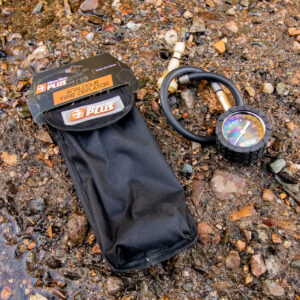There are some pretty in-depth checklists available on how to prepare your 4WD for beach driving, and it’s easy to become overwhelmed. Our advice is to take a step back and keep it simple. Follow these five easy steps below and your trip should go as smoothly, or as bumpy, as you like.
Step 1. Salt Water Protection
Protect your vehicle from sand and saltwater corrosion.
The first thing you should do is apply a non-oily rust protection spray to the underside of your vehicle. It is more than likely that at some stage your journey will involve driving through or near salt water. The combination of salt water and beach driving will cause your 4WD to start rusting if not prevented.
Rust-proofing your 4×4 with an easy-to-use DIY rust prevention product like Xtroll Chassis Guard is a must. Chassis Guard is easy to apply and will only take a few hours to have the underside of your vehicle fully protected.
take a few hours to have the underside of your vehicle fully protected.

Step 2.Recovery Gear
Now you don’t need to go spending thousands of dollars buying up all recovery gear on the shelf… In most cases packing a simple recovery kit is all you need to get out of most situations:
- Lightweight shovel
- A set of recovery tracks
- Recovery straps
Remember keeping the vehicle moving is the key to avoid getting bogged. If you do get bogged don’t stress, in many situations just a few minutes of clearing away the sand with the shovel and some recovery tracks will get you out of most situations.
Step 3.Tyre Pressure
Don’t wait until you get bogged to let your tyre pressure down! Dropping tyre pressures will increase your tyre footprint print and significantly reduce your chances of getting stuck. In most situations getting bogged in soft sand is due to tyres NOT being deflated to under 25psi.
Deflating tyres will only take a few minutes with these incredibly accurate and easy-to-use Directions Plus Tyre Deflators.
Grab a set of these easy tyre deflators to deflate your vehicle in under 3 minutes.
Step 4. Beach Access Points
Know your access track positions and tide times. Almost all beach driving will be done on either side of the low tide. Some beach access tracks can be quite challenging so it’s worth making sure you are ready to access the sand and have the above steps already in place and ready to go.
Step 5. Know Your Vehicle
Every 4WD vehicle is different but remember that the basic principles of beach driving are all the same. Knowing how your 4WD works will make life easy for you and it pays know how to use the 4WD options properly.
Before you go, make sure you know how to:
- Engage 4WD correctly.
- Swap from 4H to 4L and engage Diff lock if needed.
- Disengage traction control and ESP Traction Control.
Now you’re ready to hit the beach!
Remember when driving on the beach your 4WD will be working a lot harder, driving through soft sand at low speeds.
This prolonged driving will cause extra heat and friction on the drive train. Using an oil additive such as AW10 Antiwear to reduce engine wear will protect the engine, transmission, and differentials from extreme beach use.
Another helpful additive to run if you’re worried about you 4WD overheating is RMI-25 Cooling System Treatment, which will help reduce radiator coolant temperatures.
Finally remember to clean up… the only thing you should ever leave on the beach are tyre tracks and footprints. Enjoy! 😊
For more information on how to get your 4WD ready for the beach contact the team at Cost Effective Maintenance 07 3376 6188
 is here! Shop now, pay later in 4 easy installments
is here! Shop now, pay later in 4 easy installments


